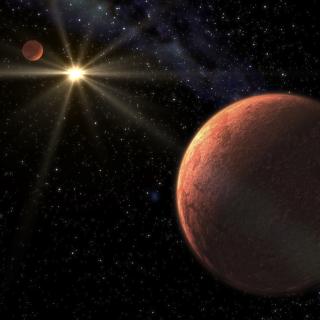Bibcode
Garai, Z.; Pribulla, T.; Parviainen, H.; Pallé, E.; Claret, A.; Szigeti, L.; Béjar, V. J. S.; Casasayas-Barris, N.; Crouzet, N.; Fukui, A.; Chen, G.; Kawauchi, K.; Klagyivik, P.; Kurita, S.; Kusakabe, N.; de Leon, J. P.; Livingston, J. H.; Luque, R.; Mori, M.; Murgas, F.; Narita, N.; Nishiumi, T.; Oshagh, M.; Szabó, Gy M.; Tamura, M.; Terada, Y.; Watanabe, N.
Referencia bibliográfica
Monthly Notices of the Royal Astronomical Society
Fecha de publicación:
12
2021
Número de citas
13
Número de citas referidas
13
Descripción
Up to now, WASP-12b is the only hot Jupiter confirmed to have a decaying orbit. The case of WASP-43b is still under debate. Recent studies preferred or ruled out the orbital decay scenario, but further precise transit timing observations are needed to definitively confirm or refute the period change of WASP-43b. This possibility is given by the Transiting Exoplanet Survey Satellite (TESS) space telescope. In this work, we used the available TESS data, multicolour photometry data obtained with the Multicolor Simultaneous Camera for studying Atmospheres of Transiting exoplanets 2 (MuSCAT2) and literature data to calculate the period change rate of WASP-43b and to improve its precision, and to refine the parameters of the WASP-43 planetary system. Based on the observed-minus-calculated data of 129 mid-transit times in total, covering a time baseline of about 10 yr, we obtained an improved period change rate of $\dot{P} = -0.6 \pm 1.2$ ms yr-1 that is consistent with a constant period well within 1σ. We conclude that new TESS and MuSCAT2 observations confirm no detection of WASP-43b orbital decay.
Proyectos relacionados

Estrellas de Baja Masa, Enanas Marrones y Planetas
Se investigan los procesos que conducen a la formación de estrellas de baja masa, enanas marrones y exoplanetas y caracterizar las propiedades físicas de estos astros en varias etapas evolutivas. Las estrellas de muy baja masa y las enanas marrones son probablemente los objetos más numerosos de nuestra Galaxia, pero no por ello están
Rafael
Rebolo López

Exoplanetas y Astrobiología
La búsqueda de vida en el Universo se ha visto impulsada por los recientes descubrimientos de planetas alrededor de otras estrellas (los llamados exoplanetas), convirtiéndose en uno de los campos más activos dentro de la Astrofísica moderna. En los últimos años los descubrimientos cada vez más numerosos de nuevos exoplanetas y los últimos avances
Enric
Pallé Bago